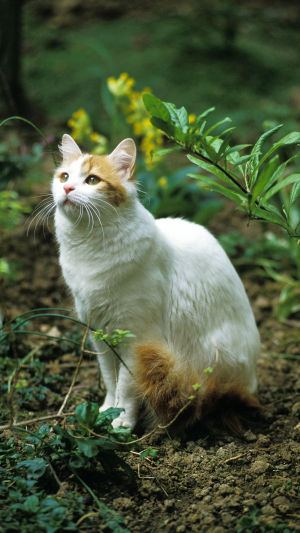Do you know how wild cats are? Cats in the wild are feral, and according to scientists, they have not been fully domesticated. They are skilled at catching things smaller than themselves. By observing them, you can discover the unique hunting abilities of wild cats, such as their skill at catching birds.
Today, cats have occupied an important place in human society, and with their own efforts, they have finally caught up with dogs in popularity. More and more people are now fond of cats.
Domestic cats are the most widely distributed and numerous type of cat in the world, with an estimated population of more than 500 million. However, their history is relatively short compared to that of other types of cats. When were cats first domesticated, and how did they spread all over the world?
How did feral cats, who had survived in the wild for thousands of years, let go of their wildness and freedom to transition to coexistence with humans? What happened in the end, and what changed?
If we want to know the answer to these questions, we need to go back to the ancient Egyptian granary, where various grains were stored.
The Egyptians had experienced famine, and so they chose to store their grain in silos to avoid it. They needed to save enough food and prepare for future famines.
Over time, the Egyptians stockpiled large quantities of grain, which attracted rodents, and in turn, feral cats. The rodents ate the grain in the granary, and feral cats used these rodents as food.
The Egyptians of that time placed cats in high esteem and were amazed at how they played a role in protecting the granaries. They were grateful for the presence of cats, which kept rodents at bay. As a result, the Egyptians began to actively feed these wild cats to prevent rodents from invading.
For most of human civilization, ancient Egyptians regarded cats as mutually beneficial companions. Cats might come to human homes when the weather was hot, and humans provided them with shelter from the heat. In turn, they drove away dangerous animals such as snakes and scorpions.
This harmonious relationship made cats more and more popular with the ancient Egyptians. Eventually, cats were successfully domesticated by the ancient Egyptians, who regarded them as close companions.
One thing we can observe is that even though we provide cats with more than enough food, they continue to eat rodents and other prey, demonstrating their innate predatory nature.
As we saw earlier, cats help humans deal with grain-destroying rodents, and humans reward cats for this behavior. Cats came to humans by themselves, and fortunately, humans are happy with their ability to control pests.
As time goes by, people have grown increasingly fond of cats because of their cute and docile nature. Cats have also become used to the new environment, and they gradually realize that food is readily available as long as they are around humans. Humans provide food to cats, and cats protect human food. This is almost an equal transaction.





